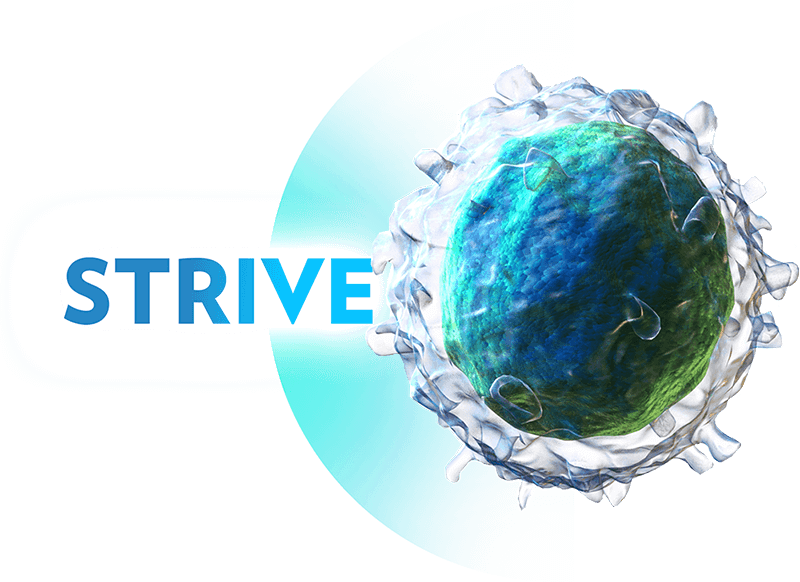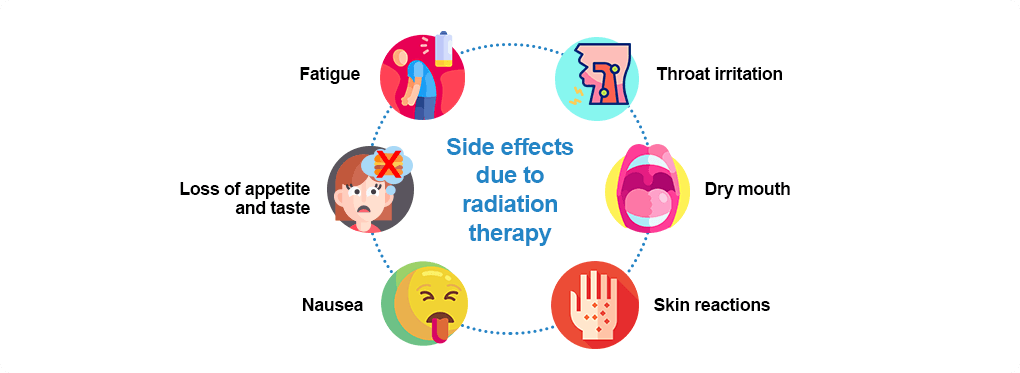Navigating Side Effects
Treatment for non-Hodgkin lymphoma (NHL) may cause various side effects or toxicities. Fortunately, there are several medications and lifestyle modifications that can effectively prevent or lessen the severity of most side effects. Before beginning treatment, patients should ask their healthcare team about possible treatment side effects and how to prevent and manage them. In addition, once treatment has begun, patients need to tell their doctor or a member of the healthcare team about all side effects they experience. Here we explain the types of side effects caused by different treatments, and steps for minimizing these side effects.1
Side Effects Due to Chemotherapy
The type and severity of side effects caused by chemotherapy depend on the types of drugs administered, an individual patient’s tolerance, and the length of time and frequency of therapy. The same drug may cause no side effects in one patient, while in others it may cause very mild to very serious side effects.1,2
Some of the very common possible side effects are changes in taste, cognitive problems (trouble concentrating, impaired memory; sometimes called “chemo brain”), decreased blood cell production (decreased hemoglobin, white blood cells [including neutrophils and lymphocytes], or platelets), diarrhea or constipation, fatigue, hair loss, heart damage (cardiotoxicity), abnormal heart rate, increased risk of infections, loss of appetite, lung toxicity (shortness of breath, dry cough, fatigue), mouth sores, nausea or vomiting, peripheral neuropathy (numbness and pain in the hands and feet), problems with sexual function, infertility (the inability to have children), and tumor lysis syndrome (a reaction to toxins released by dying cancer cells).1,2
Side Effects Due to Radiation Therapy
Radiation therapy itself is painless, but it can cause short‑term and long‑term side effects that vary depending on the type of radiation, the dosage, and the area of the body treated. Side effects are usually more severe when radiation therapy and chemotherapy are given at the same time. Some of the short‑term side effects caused by radiation therapy are listed below.2
Side Effects Due to Stem Cell Transplantation
The type and frequency of the side effects associated with stem cell transplantation vary depending on whether the stem cells are autologous (from oneself) or allogeneic (from a donor). Patients treated with high doses of chemotherapy and/or radiation before undergoing a blood stem cell transplant are at increased risk for developing infection, bleeding and neurologic and psychiatric complications like post-traumatic stress disorder.2
Side Effects of Immunotherapy
CAR T-cell therapy
Many of the common side effects of CAR T‑cell therapy are fatigue, decreased appetite, chills, diarrhea, febrile neutropenia (low levels of white blood cells called neutrophils, along with fever), infection, nausea, cough, vomiting, and constipation. Patients may also experience neurological effects. These symptoms usually occur during the first two to three days after receiving the CAR T cells and include altered mental state (encephalopathy), headache, tremor, dizziness, speech problems (aphasia), delirium, insomnia, and anxiety. Cytokine release syndrome (an intense systemic inflammatory response) is a unique side effect in response to the activation and growth of a patient’s CAR T cells and will be monitored.1,3
Monoclonal antibodies (mAbs)
Common side effects of mAbs can include infusion reactions and low blood cell counts, and they may also cause a predisposition to infection because they suppress immunity. These side effects are usually mild, but they can sometimes be severe. Other rare but potentially very serious side effects include infections, tumor lysis syndrome, hepatitis B‑virus reactivation, severe skin and mucous membrane reactions, or a viral infection of the brain called progressive multifocal leukoencephalopathy.2
Bispecific antibodies (bsAbs)
Side effects for T-cell-engaging bsAbs include cytokine release syndrome (CRS) and neurological effects (including a type of neurological damage caused by immune cells called immune effector cell-associated neurotoxicity syndrome, or ICANS). Neurological effects (including headache, confusion, tremors, or dizziness) may also occur because of the immune response in the brain after receiving the bsAbs, and they usually follow CRS. Additional toxicities described for bsAbs include fever, injection-site reactions (such as swelling, rash, or pain), and low blood cell counts.1
Managing Side Effects
Palliative (Supportive Care)
The goal of palliative care, or supportive care, is to provide relief from the side effects and emotional stress of a serious illness, such as cancer. It helps improve quality of life for both the patient and the family. Palliative care is offered by an interdisciplinary team of palliative care specialists including doctors, nurses, and social workers. Other professional team members may be included, and each member will work with you, your family members, and your caregiver to provide extended support. The type of care the team will suggest depends on the signs and/or symptoms that interfere with the patient’s quality of life and goals for treatment. Examples of palliative care include nutrition, physical or occupational therapy, pain management, medications to ease side effects, therapy or counseling, help with practical issues, such as managing finances or relationships, and other medical treatments.4
Pain Management
NHL itself or the treatments and procedures can cause pain. Pain is treatable and patients should tell their doctors, nurses, or physician assistants if they have any pain, because the healthcare team can offer advice regarding medications and other strategies to reduce and manage the pain. Pain can be best controlled by different types of pain relievers; however, some medications may not be appropriate for patients with NHL. Patients should ask their healthcare team which options are best to help manage their pain. Some of the strategies to manage pain are: 4
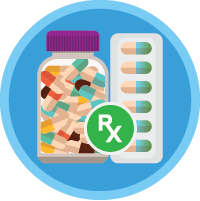
Medication
Nonsteroidal anti-inflammatory drugs (NSAIDs), acetaminophen, opioid analgesics, antidepressant and anticonvulsant drugs; nerve blocks, corticosteroids, anesthetics; specialized injections, infusions, topical creams and skin patches
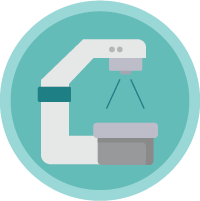
Other Medical Interventions
Medical devices, surgical procedures or treatments to address the source of the pain (for example, radiation therapy to relieve pain caused by enlarged liver, lymph nodes or spleen)

Psychosocial Interventions
Stress management, counseling, coping mechanisms

Rehabilitation Techniques
Exercise therapy, application of heat or cold, myofascial therapy
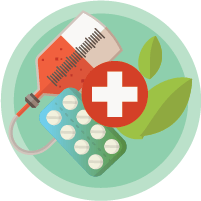
Integrative Medicine and Complementary Therapies
Acupuncture, hypnosis, yoga, aromatherapy, therapeutic massage, supplements
Fertility Preservation
Treatments for NHL can affect fertility in both males and females. The risk of infertility depends on several factors, including the type of treatment received, the duration or dosage of treatment and the patient’s age at the start of treatment. Several options are available to preserve fertility, of which a few require that action be taken before treatment begins. Options can include: 4
- Sperm banking
- Egg or embryo (egg fertilized with sperm) freezing
References:
Lymphoma Research Foundation. Side Effect Management. May 2024.
https://lymphoma.org/wp-content/uploads/2024/10/Side_Effect_Management_Fact_Sheet_2024.pdfLymphoma Research Foundation. Understanding Lymphoma and Chronic Lymphocytic Leukemia/Small Lymphocytic Lymphoma (CLL/SLL). 2023.
https://lymphoma.org/wp-content/uploads/2024/04/LRF_Understanding-Lymphoma_2023-PART-5.pdf
Lymphoma Research Foundation. Understanding Cellular Therapy. 2022.
https://lymphoma.org/wp-content/uploads/2023/01/LRF-Cell-Therapy-Guide-2022_v03-1.pdfBlood Cancer United. Side Effects and Supportive Care. November 30, 2022.
https://llsorg.widen.net/view/pdf/uqla0iffvo/booklet_en_ch7pediatriccaregiverworkbook.pdf
All URLs accessed November 5, 2025
